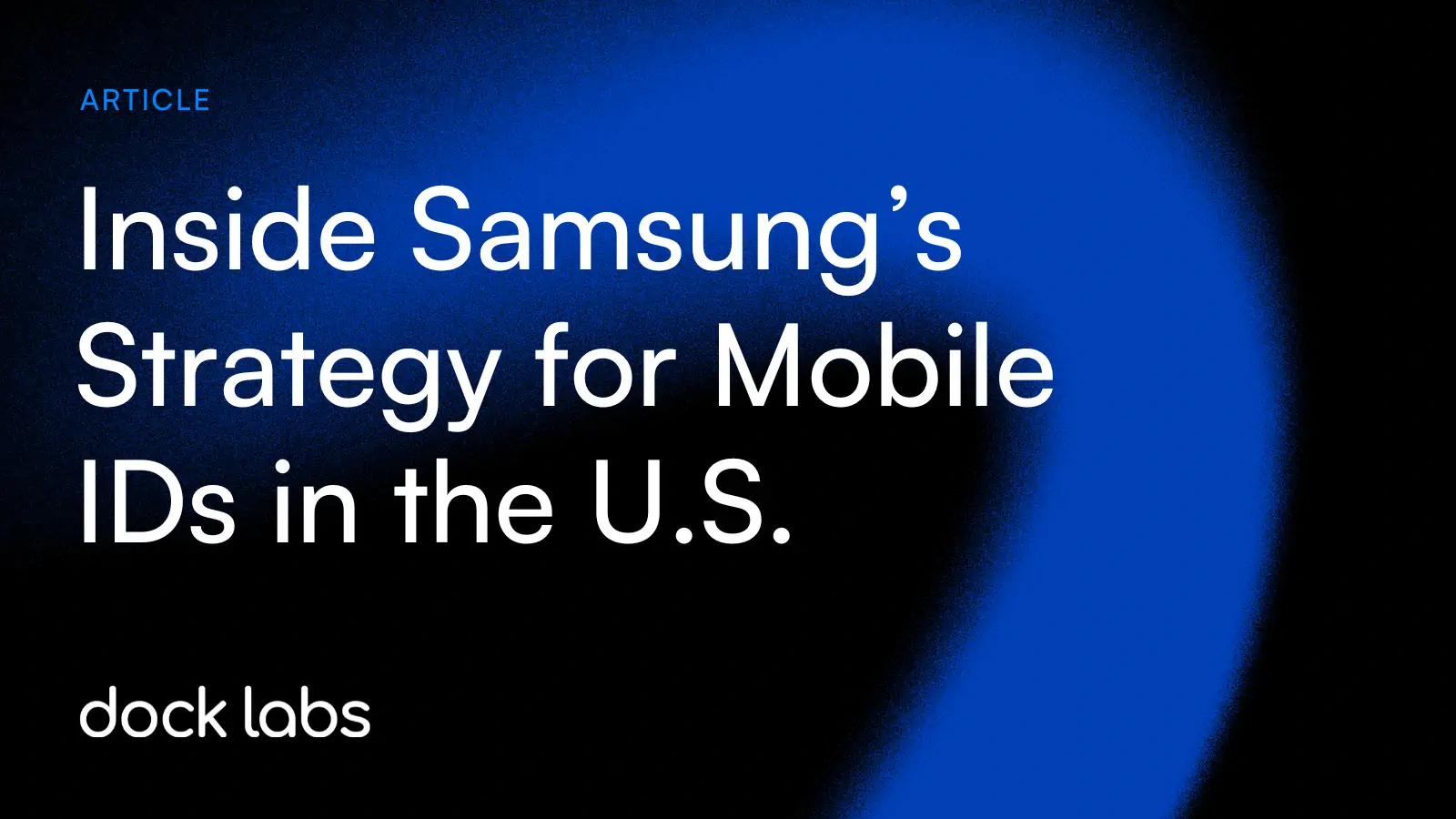We recently sat down with Rob White, Head of Identity Services at Samsung Wallet, to talk about the rollout of mobile driver’s licenses (mDLs) in the U.S.
While the idea of putting your driver’s license on your phone sounds like a simple upgrade, what Samsung is building goes far beyond that.
They're rethinking how identity is shared, verified, and protected in the digital age, and what needs to happen to make that a mainstream reality.
Here are a few of the big ideas that stood out from our conversation:
Samsung’s Vision for Digital Identity
Samsung isn’t just trying to digitize what’s already in your wallet.
Their goal is to replace the physical wallet entirely, uniting payments, ID, keys, loyalty cards and tickets in one seamless, secure experience tied closely to the phone’s hardware.
Rob emphasized that identity needs to evolve alongside the technologies we use to interact with businesses and services.
As fraud becomes easier to commit (think deepfakes, fake documents, and social engineering) Samsung sees the shift to digital identity anchored in cryptography and digital signatures as essential.
And it’s not just about convenience.
It’s about giving people control over their personal data, helping organizations reduce fraud, and enabling faster, safer ways to verify identity in everyday situations.
The Samsung Wallet leverages the phone’s embedded Secure Element (a tamper-resistant hardware chip), combined with biometric authentication and user consent, to ensure credentials are only ever shared by the rightful owner, and only when the user approves it.
Why Partnerships Are Essential to mDL Adoption
But even with the tech in place, adoption won’t happen automatically.
Rob was clear about the ecosystem challenge: there’s a real chicken-and-egg problem at play.
State governments are hesitant to roll out digital IDs until there’s a proven demand for them.
Businesses and relying parties don’t want to integrate mDLs unless enough people are already using them.
To break that cycle, Samsung is working on both sides of the equation.
They’re partnering with state issuers (currently live in six states), while simultaneously building out real-world use cases with companies like Amazon and several KYC providers.
Rob also gave credit to early-mover states and standards bodies like AAMVA and the TSA, which are helping set the foundation for secure, interoperable mDL adoption.
And he extended an open invitation to anyone building in this space to collaborate: “If you have ideas and want to work with a wallet provider like Samsung, reach out.”
What Will Actually Drive Adoption?
When it comes to getting users to adopt mobile IDs, habit-changing use cases are critical. It’s not enough to digitize your license if you only use it twice a year.
Rob pointed to several use cases where mDLs can provide immediate, repeatable value:
- Age-restricted purchases, like buying alcohol at a baseball game or in stores.
- Online identity verification during high-risk financial transactions.
- Account recovery for services like Amazon.
- Check-ins for state government services or benefits.
- Car rentals, where verifying your ID is essential and often a hassle.
In each case, the traditional ID verification process is slow, manual, and frustrating.
A mobile ID stored securely in your digital wallet can turn a 5-minute process (uploading documents, taking a selfie) into a 5-second interaction with better privacy and lower fraud risk.
And sometimes, even small conveniences can lead to broader adoption.
Rob told a great story about waiting in line for a beer at a Red Sox game, thinking about how much faster the line would move if everyone could just tap their mDL and pay in one motion.
That may not be the world’s most pressing problem, but it’s the kind of moment that can win people over and make them actually want to adopt something new.
mDLs may still be in their early stages in the U.S., but what Samsung is building has real potential to shift how identity works if the right partnerships and use cases continue to align.






